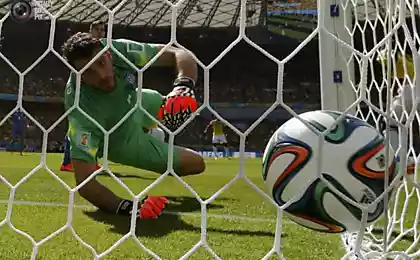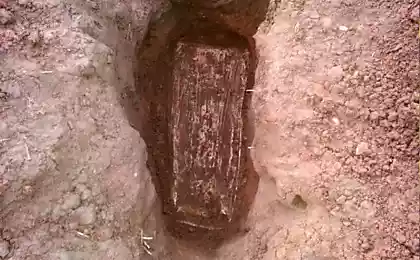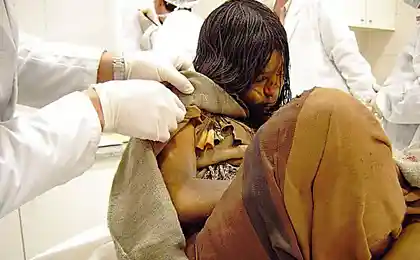937
Mummies of the world
The Franklin Institute, located in Philadelphia, invites visitors to an unusual exhibition titled "Mummies of the world." In this exhibition, each exhibit is unique - because here you can see the dog, whose remains were buried in peat bogs in Germany about five hundred years, and embalmed child who lived 6,420 years ago in Peru. The exhibition features forty-five ninety-five mummies and items related to mummification and embalming. The exhibition "Mummies of the World" was prepared with the participation of experts from fifteen European institutions under the auspices of the German Museum Reiss Engelhorn, Mannheim (Reiss-Engelhorn Museum). The exhibition traveled to many major US cities.
15 photos from here
1. Peruvian mummy, who lived in the thirteenth century BC
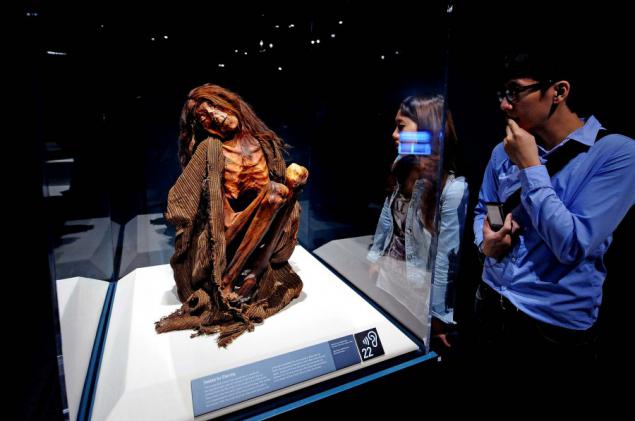
2. Detmold child: Peruvian child mummy is age eight or ten months, who died 6500 years ago, most likely due to heart disease. The mummy was presented at the exhibition of the museum in Detmold, Germany. This is one of the oldest mummies in the world, it is even older than the mummy of Pharaoh Tutu on more than three thousand years.
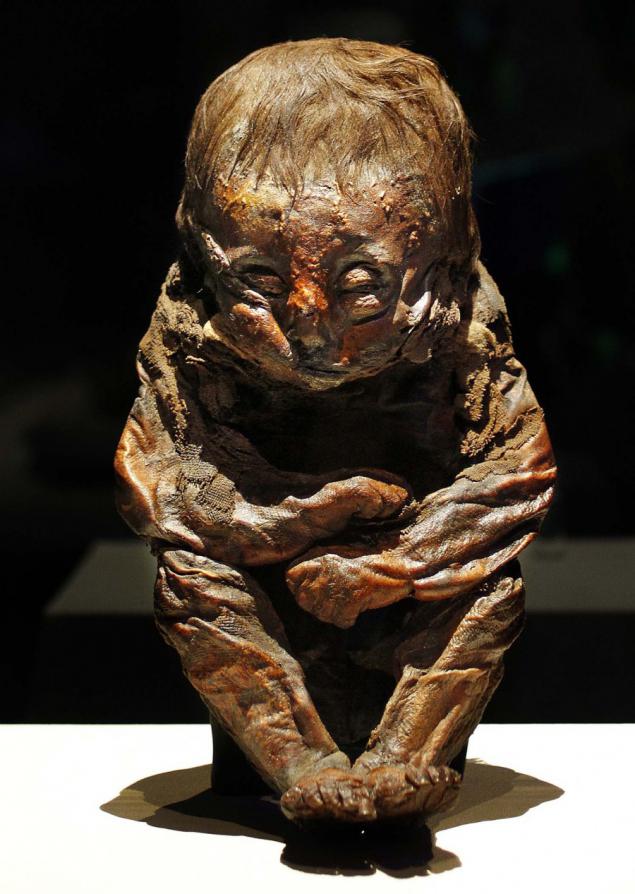
3. The mummy of ancient Egyptian.

4. Ten Naish Brumer considering adult mummy, which was found in the caves of Chile.

5. Discovered in South America mummy of a woman with children.

6. Mummy Orlovitsa Michael (Michael Orlovits), who was born in Vac, Hungary, in 1765. Mummies Orlovits family members were found in a crypt in Vac in 1994 during the reconstruction of the Dominican church. The cold, dry air in the crypt, as well as pine oil allowed the bodies mummified and preserved to this day.

7. Studies have shown that Orlovits Veronica (Veronica Orlovits) suffered from severe tuberculosis, as well as her husband, Michael Orlovits. In addition, the body were found some other injuries and wounds.

8. Mummy Yoganessa (Johannes Orlovitz) from the family Orlovits.

9. Dr. Heather Gill-Frerking (Heather Gill-Frerking), serving-Engelhorn Museum Rice, said: "Computer tomography and other scientific methods are very useful in the study of mummies, with their help, we can learn more about how people lived and died. This technique is noninvasive and use it to make a three-dimensional record of a mummy for the archive, which also allows us to preserve the mummies for the study of subsequent generations. " The photo was taken at the Medical Center "Cedar-Sinai," California.

10. The result of the scan of the mummy of Michael Orlovitsa conducted at the Medical Center "Cedar-Sinai," California.
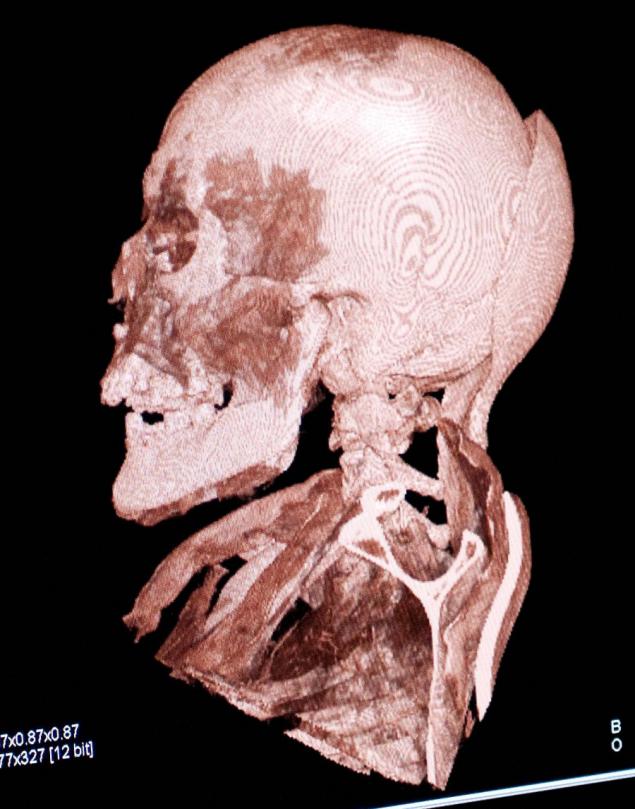
11

12. The pre-Columbian era mummy, which was found in the Atacama Desert (Chile).

13. Mummy howler monkeys from South America.

14. The mummy of ancient Egyptian, who lived around 400 BC

15. On the eve of the opening of the exhibition "Mummies of the World" in the California Science Center staff and John Eric Russia Diloski sealed glass cube, which contains a sarcophagus and an Egyptian mummy.
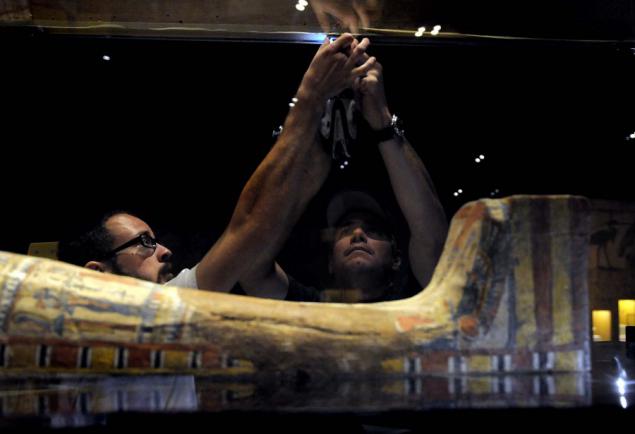
Source:
15 photos from here
1. Peruvian mummy, who lived in the thirteenth century BC

2. Detmold child: Peruvian child mummy is age eight or ten months, who died 6500 years ago, most likely due to heart disease. The mummy was presented at the exhibition of the museum in Detmold, Germany. This is one of the oldest mummies in the world, it is even older than the mummy of Pharaoh Tutu on more than three thousand years.

3. The mummy of ancient Egyptian.

4. Ten Naish Brumer considering adult mummy, which was found in the caves of Chile.

5. Discovered in South America mummy of a woman with children.

6. Mummy Orlovitsa Michael (Michael Orlovits), who was born in Vac, Hungary, in 1765. Mummies Orlovits family members were found in a crypt in Vac in 1994 during the reconstruction of the Dominican church. The cold, dry air in the crypt, as well as pine oil allowed the bodies mummified and preserved to this day.

7. Studies have shown that Orlovits Veronica (Veronica Orlovits) suffered from severe tuberculosis, as well as her husband, Michael Orlovits. In addition, the body were found some other injuries and wounds.

8. Mummy Yoganessa (Johannes Orlovitz) from the family Orlovits.

9. Dr. Heather Gill-Frerking (Heather Gill-Frerking), serving-Engelhorn Museum Rice, said: "Computer tomography and other scientific methods are very useful in the study of mummies, with their help, we can learn more about how people lived and died. This technique is noninvasive and use it to make a three-dimensional record of a mummy for the archive, which also allows us to preserve the mummies for the study of subsequent generations. " The photo was taken at the Medical Center "Cedar-Sinai," California.

10. The result of the scan of the mummy of Michael Orlovitsa conducted at the Medical Center "Cedar-Sinai," California.

11

12. The pre-Columbian era mummy, which was found in the Atacama Desert (Chile).

13. Mummy howler monkeys from South America.

14. The mummy of ancient Egyptian, who lived around 400 BC

15. On the eve of the opening of the exhibition "Mummies of the World" in the California Science Center staff and John Eric Russia Diloski sealed glass cube, which contains a sarcophagus and an Egyptian mummy.

Source:












